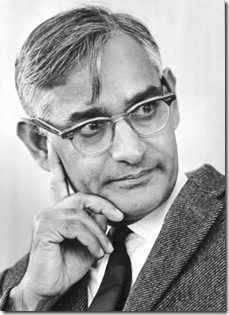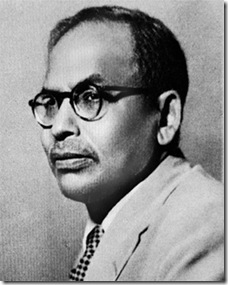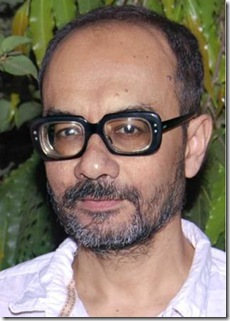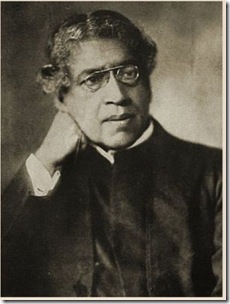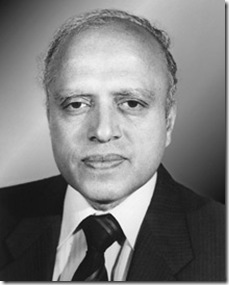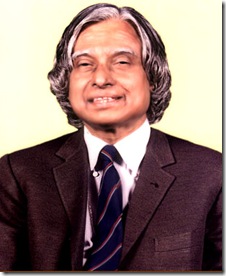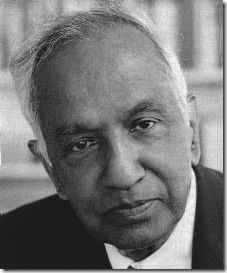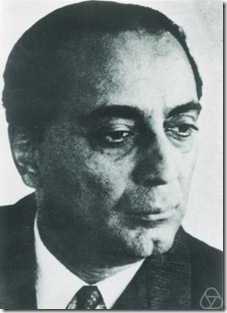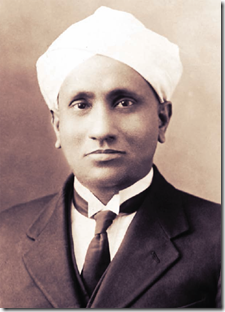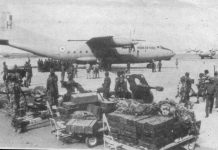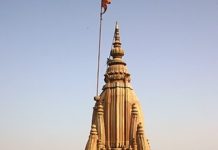India has produced great mathematicians, scientists, chemists, physicians, astrophysicists and botanists. Even since ancient times, India had astronomers, mathematicians and inventors. With this article, I am trying to present Top 10 IndianScientists of Modern Times.
Prafulla Chandra Ray (1861-1944)
Prafulla Chandra Ray is known as the “Father of Chemistry” in modern India. He was born on August 2 , 1861 in a small village of Khulna District (presently in Bangladesh). He completed his BSc in Edinburgh University where he studied Physics, Chemistry and Biology amongst other subjects. He later completed his doctoral thesis (DSc) in the same university. He came back to India in 1888 and joined Presidency College, Calcutta as an assistant professor. In 1896, he published a paper on preparation of a new stable chemical compound called Mercurous nitrite. He started a new Indian School of Chemistry in 1924. He was also a well-known writer and mainly wrote on subjects pertaining to science. He is known for his two books, i.e., ‘Life and Experience of a Bengali Chemist’ in 1932 and ‘A History of Hindu Chemistry from the Earliest Times to the Middle of Sixteenth Century.’ He died on June 16, 1944 in Calcutta.
Har Gobind Khorana (1922-2011)
Har Gobind Khorana was born on January 9, 1922 Raipur village in West Punjab (now in Pakistan). He finished both his B.Sc and M.Sc in Punjab University, Lahore. He then earned his Ph.D. at the University of Liverpool and continued his postdoctoral studies in Zurich. In 1966, he became naturalized citizen of the United States. He shared the 1968 Nobel Prize for Physiology or Medicine with Marshall W. Nirenberg and Robert W. Holley for research that helped to show how the nucleotides in nucleic acids, which carry the genetic code of the cell, control the cell’s synthesis of proteins. He also received Padma Vibhushan in 1968 from the Government of India. He is one of the most renowned Indian biochemist. He died of natural causes in November 9, 2011 in Concord, Massachusetts at the age of 89.
Meghnad Saha (1893-1956)
Meghnad Saha was born in a poor family in Shaoratoli village near Dhaka in 6 October 1893. He pursued his higher studies in Dhaka College and later in Presidency College, Kolkata. His is best known for his works concerning Thermal ionization and Saha ionization equation. This equation became important factor in interpretation of the spectra of stars in astrophysics. Using his equation, one can find temperature of a given star and its chemical makeup. He also invented an instrument to measure the weight and pressure of solar rays. He developed the original plan for Damodar Valley Project. He was also the chief architect of river planning in India. He died on February 16, 1956 at the age of 62.
Ashoke Sen (1956-Present)
Ashoke Sen was born in 1956. His father was professor of physics at the Scottish Church College, Calcutta. He earned his Bachelor of Science degree from Presidency College, Calcutta and his master’s degree from IIT Kanpur. He later did his doctoral work in physics at Stony Brook University in New York, USA. He then pursued his career as a theoretical physicist and made a number of major original contributions to the subject of string theory. He recently came into limelight when he was awarded the first Fundamental Physics Prize 2012. Fundamental Physics Prize is worth $3 million (approx. 3x the Nobel Prize). He was also the recipient of Padma Bhushan in 2013.
Jagadish Chandra Bose (1858-1937)
Jagadish Chandra Bose was born in Bikrampur, Bengal in 30 November 1858. He received a bachelor’s degree from University of Calcutta in 1879. Bose then went to England to study Medicine at the University of London, but discontinued owing to his ill health. With some recommendation, he secured admission in Cambridge University to study Natural Science from where he graduated in 1884. He later returned to India and became a professor of physics in Presidency College, Kolkata. In spite of the lack of the infrastructure for research and racialism he faced there, he pursued his research with his own hard-earned money on radio waves. He is considered a pioneer in the field of radio signals. He never patented any of his inventions believing that it hindered further creative development of his inventions. Decades after his death, his place in history has been reevaluated by scientists worldwide and he is credited with the invention of first wireless detection device and discovery of millimeter length electromagnetic waves. Apart from being a scientist, he was also a writer and is credited as being the first Bengali science fiction writer for his Niruddesher Kahini. He died on 23 November 1937 at the age of 78.
M. S. Swaminathan (1925-Present)
Mankombu Sambasivan Swaminathan was born in Kumbakonam district of Tamil Nadu in 7 August 1925 in a well-to-do family. He earned his Bachelor’s degree in Zoology in Maharajas College in Trivandrum, Kerala and later went on to again earn a Bachelor’s degree in Agricultural Sciences from Tamil Nadu Agricultural University. He described that his motivation for choosing his career path in agricultural sciences was the Bengal famine of 1943. He then took up a career in plant genetics mainly focussing on plants that served as source of food for humans. He is known as the “Father of Green Revolution in India” for his leadership and success in introducing high yield varieties of wheat and rice in India. He was the first recipient of World Food Prize in 1987. He has worked worldwide in collaboration with students and colleagues on a range of subjects pertaining to plant breeding, agricultural research and development and conservation of natural resources. He has been honored by Government of India with Padma Shri, Padma Bhushan and Padma Vibhushan for his contributions. He is currently the chairman of the National Commission on Agriculture, Food and Nutrition Security of India.
A. P. J. Abdul Kalam (1931-Present)
A.P.J Abdul Kalam was born in a poor Tamil Muslim family in the Rameshwaram district of Tamil Nadu on 15 October 1931. Right from his childhood, he was an average student, but teachers described him as a hardworking and a bright student with exceptional love for mathematics and science. He graduated in physics from Saint Joseph’s College, Tiruchirappalli in 1954 and later graduated from Madras Institute of Technology in Aerospace Engineering in 1960. It was a time when Aerospace Engineering in India was in its nascent stages. He joined Aeronautical Development Establishment of DRDO and started his career designing small helicopter for Indian Army. In 1969, he was transferred to ISRO and made the project director of India’s first satellite launch vehicle SLV, which later successfully deployed Rohini satellite in 1979. In the 1970s, he was also involved in two other important projects to develop indigenous ballistic missiles on the technology used to launch SLV vehicle. He played a vital role in developing most of India’s current missiles under the Integrated Guided Missile Development Program including the most famed Agni range of missiles. He also served as 11th President of India from 25 July 2002 to 25 July 2007.
Subrahmanyan Chandrasekha (1910-1995)
Subrahmanyan Chandrasekhar was born in a Tamil Iyer family in Lahore, Punjab in 19 October 1910. He obtained his bachelor’s degree in Physics in Presidency College in Madras. Under Government of India’s scholarship, he finished his master’s degree from Cambridge University. He is known for his theory of maximum mass of a stable white dwarf star, now known as “Chandrasekhar limit.” He received Nobel Prize along with William A. Fowler in 1983 for his studies on the physical processes important to the structure and evolution of stars. He received 14 famed international awards for his contributions to the field of science in his lifetime. He died of a sudden heart attack in 1995 in the University of Chicago Hospital.
Homi Jehangir Bhabha (1909-1966)
Homi Jehangir Bhabha was an Indian nuclear physicist and most famously is known as “Father of Indian Nuclear Programme.” He was born in a wealthy Parsi family and was related to the Tata family. After completing his studies overseas in Cambridge University and after WWII broke out, he returned to India and decided to stay here. After Independence, he heralded India’s dream of a nuclear future. He is credited with formulating the country’s strategy in the field of nuclear power to focus on extracting power from the country’s vast thorium reserves. As a result of Bhabha’s vision, “India has the most technically ambitious and innovative nuclear energy program in the world. The extent and functionality of its nuclear experimental facilities are matched only by those in Russia and are far ahead of what is left in the US.” He died when Air India Flight 101 crashed near Mont Blanc on January 24, 1966. One conspiracy theory is that CIA was involved with the crash possibly to cripple India’s nuclear programme.
C. V. Raman (1888-1970)
C.V. Raman was born in 1888 in Thiruvanaikaval, near Tiruchirappalli in the Madras Province. He was second of five children. His father was the lecturer of physics and mathematics at the Presidency College in Madras. At just the age of 13, in 1903, he entered Presidency College of Madras to pursue his interests in Physics. He finished his postgraduation in physics in the same institution. After many years of government service, he resigned to become a professor of physics in University of Calcutta in 1917. Alongside, he also worked for a number of Indian research institutions throughout his career. He is most notable for his discovery that when light traverses a transparent material, some of the light that is deflected changes in wavelength. This phenomenon has now come to be known as Raman scattering and is the result of Raman Effect. He was the recipient of Nobel Prize for Physics in 1930 for this discovery. C.V. Raman during his career wrote as much as 63 article and papers, both for Indian and international magazines. He died on November 21, 1970.



















